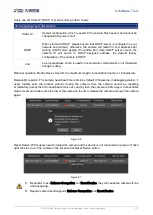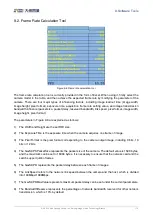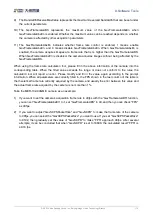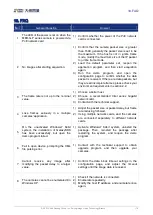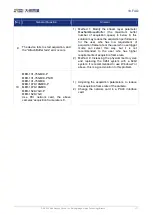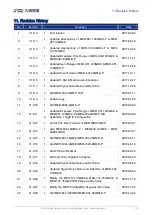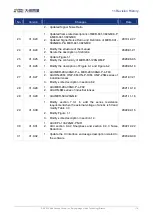
8.Features
© 2023 China Daheng Group, Inc. Beijing Image Vision Technology Branch 165
MER-1220-9GM/C(-P)
Row period (unit: μs):
T
row
=
198
37.5
= 5.28
Camera acquisition time (unit: μs):
T
acq
=
(
29
+ 42
)
× T
row
MER-1520-7GM/C(-P)
Row period (unit: μs):
T
row
=
4920
220
= 34.5
Camera acquisition time (unit: μs):
Pixel format is 8bit:
T
acq
=
(
Height
+ 3092
)
× T
row
Pixel format is 12bit:
T
acq
=
(
Height × 2
+ 3092
)
× T
row
MER-2000-5GM/C(-P)
Row period (unit: μs):
T
row
=
2232
72
= 31
Camera acquisition time (unit: μs):
T
acq
=
33
+
(
max
(
Height
,
1848
)
+
5
)
×
T
row
Height > 1848:
T
acq
= 33
+
( Height + 5 ) × T
row
Height < 1848:
T
acq
= 33
+
1848 × T
row
3)
The camera's acquisition frame rate
In addition to the maximum allowable bandwidth of the network and the time limit for camera acquisition,
the exposure time can also affect the frame rate. For example: for MER-200-20GM/C-P camera, when the
exposure time is 100ms, the corresponding frame rate is 10fps.
In conclusion, the frame rate of the camera takes the minimum of the maximum allowable frame rate of
the network, the acquisition frame rate and the exposure frame rate.























